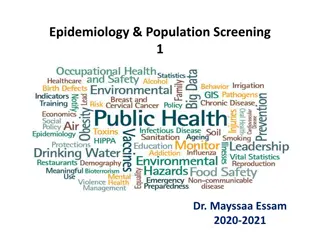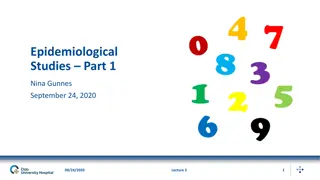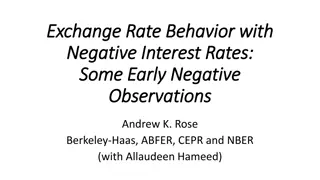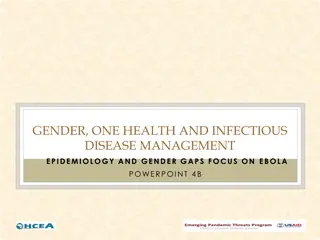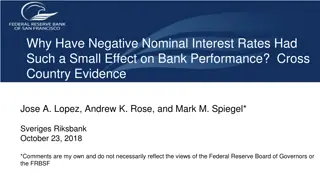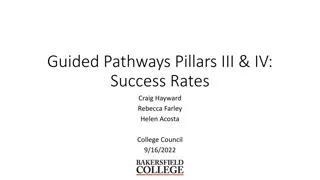
Epidemiology Rates in Public Health
Exploring the importance of ratios, proportions, and rates in epidemiology to describe aspects of morbidity, mortality, and natality. Learn about different frequency measures used to analyze disease, death, and birth in populations.
Download Presentation

Please find below an Image/Link to download the presentation.
The content on the website is provided AS IS for your information and personal use only. It may not be sold, licensed, or shared on other websites without obtaining consent from the author. If you encounter any issues during the download, it is possible that the publisher has removed the file from their server.
You are allowed to download the files provided on this website for personal or commercial use, subject to the condition that they are used lawfully. All files are the property of their respective owners.
The content on the website is provided AS IS for your information and personal use only. It may not be sold, licensed, or shared on other websites without obtaining consent from the author.
E N D
Presentation Transcript
Epidemiology Rates Dr. selman Al-Kerety
In public health, we use ratios and proportions to characterize populations by age, sex, race, exposures, and other variables. We also use ratios, proportions, and, most important rates to describe three aspects of the human condition: morbidity (disease), mortality (death) and natality (birth).
Frequency of measures by type of event described Condition Ratios Proportions Rates Morbidity (Disease) Risk ratio (Relative risk) Rate ratio Odds ratio Attributable proportion Point prevalence Incidence rate Attack rate Secondary attack rate Person-time rate Period prevalence
Frequency of measures by type of event described Condition Ratios Proportions Mortality (Death) Maternal mortality rate Proportionate mortality ratio Postneonatal mortality Rate Rates Crude mortality rate Cause-specific mortality rate Age-specific mortality rate Sex-specific mortality rate Race-specific mortality rate Age-adjusted mortality rate Neonatal mortality rate Infant mortality rate Years of potential life lost rate Death-to-case ratio Proportionate mortality Case-fatality rate
Frequency of measures by type of event described Condition Ratios Proportions Rates Natality (Birth) Low birth weight ratio Crude birth rate Crude fertility rate Crude rate of natural increase
Information ratios on mortality from bird flu died ; 20 lived ; 60
information proportions on mortality from bird flu died 14% lived 86%
Morbidity Frequency Measures To describe the presence of disease in a population, or the probability (risk) of its occurrence, we use one of the morbidity frequency measures. In public health terms, disease includes illness, injury, or disability.
Disease Incidence Rate An incidence rate : rate is the number of new cases per population at risk in a given time period., such as a new case of illness, occurs in a population over a period of time.
Incidence Rate Incidence rate = New cases occurring during a given time period population at risk during the same time period x 10n
Disease Attack Rate In epidemiology, the attack rate is the biostatistical measure of frequency of morbidity, or speed of spread, in an at risk population. It is used in hypothetical predictions and during actual outbreaks of disease.
Secondary Attack Rate Secondary Attack Rate:A measure of the frequency of new cases of a disease among the contacts of known cases. Secondary attack rate = # persons in affected household who develop disease after exposure to primary case / household contacts=
Disease Prevalence Rate Prevalence: The number or proportion of cases or events or conditions in a given population. Prevalence Rate: The proportion of persons in a population who have a particular disease or attribute at a specified point in time or over a specified period of time. Prevalence Rate= new + old case
Mortality Statistics Mortality Rate: A measure of the frequency of occurrence of death in a defined population during a specified interval of time. 1.Mortality Rate, Infant:. 2.Mortality Rate, Neonatal: 3.Mortality Rate, Postneonatal:
Mortality Rate, Infant: the number of deaths among children under one year of age reported during a given time period the number of births reported during the same time period. The infant mortality rate is usually expressed per 1,000 live births.
Mortality Rate, Neonatal the number of deaths among children from birth up to but not including 28 days of age the number of live births reported during the same time period. The neonatal mortality rate is usually expressed per 1,000 live births.
Mortality Rate, Postneonatal the number of deaths among children from 28 days up to but not including 1 year of age during a given time period the number of lives births reported during the same time period. The postneonatal mortality rate is usually expressed per 1,000 live births.


